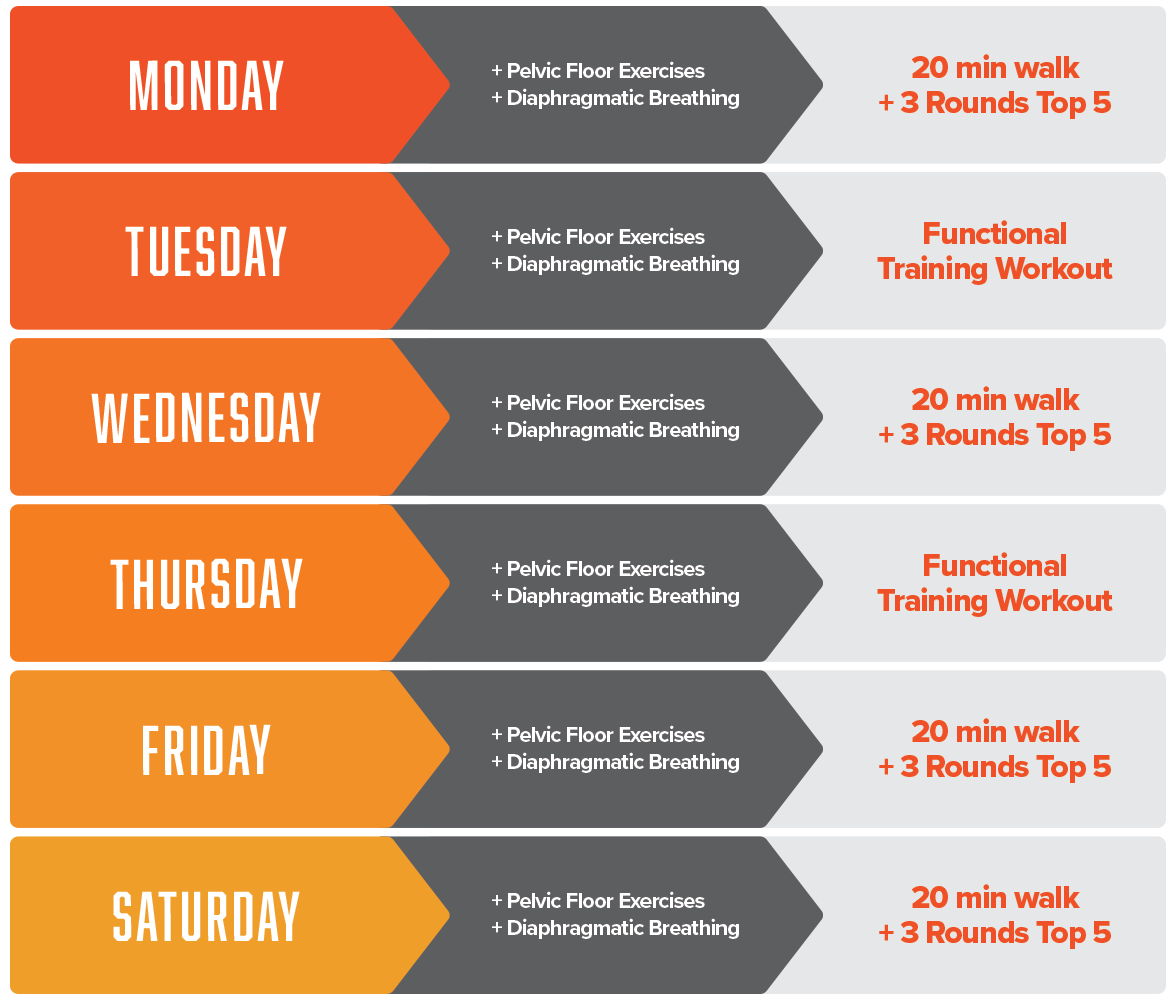We all know that as a mum, you are always looking after everyone else. But it's important to take care of yourself too! There are lots of ways to do this but sometimes having so much information at our fingertips can be confusing and overwhelming.
Below we break down the main things to focus on to keep things simple. They may seem basic, but they are the core foundation to basic strength and mobility that ensure our bodies are fit for everyday life. Participating in HIIT training without ensuring these basic core muscles are functioning, forces your body to overuse the wrong muscles, (reducing the positive impact of your training and) often resulting in injury
Pulling back to basics, the primary goal in postpartum exercise is to start moving again with movements that make you feel good with a focus on rebuilding the core. Cardio should be limited in the initial weeks to light movement until the pelvic floor muscles rebuild but don’t let that stop you from moving.
Moving has so many benefits that are so beneficial after having a baby. Just going for a 20 min walk, can play an overall role in your mood, as it helps to boost endorphins, the "feel-good” chemicals in the brain. Additional to this, benefits of a post- partum exercise plan include:
- Strengthening and toning abdominal muscles that were stretched during pregnancy
- Improving posture
- Boosting energy levels
- Promoting better sleep
- Relieve stress
- Help lose any extra weight gained
- Improves mild to moderate depressive symptoms
Below is a simple to follow program that will provide you with the correct steps and exercises that your body benefits from after birth. It doesn’t need to be followed every day. This is just an outline to give you a guide how you might mix it up. Do what feels right for you and your body.

Pelvic Floor Exercise
Pelvic floor muscles form the base of the group of our muscles known as our ‘core’. These muscles work together with our other core muscles supporting all primal movements by stabilizing the core and supporting power generation for movement and exercise. When our core muscles aren’t working, then we overuse other muscles to compensate for the lack of internal power. Overloading the pelvic floor regularly without strengthening it first can result in worsening the pelvic floor. To learn more the Australian Continence Foundation (https://www.pelvicfloorfirst.org.au/pages/the-pelvic-floor-and-core.html) has a great explanation.
Exercise:
- Contract your pelvic floor muscles. Do not hold your breath or tighten your stomach bottom of thigh.
- Hold. You can start by holding for 1 second and increasing as you go.
- Relax muscles
- Repeat throughout the day.
Diaphragmatic Breathing
Diaphragmatic breathing is a deep breathing exercise improving core stability and reducing stress. It encourages a full oxygen exchange slowing down the heart rate and allowing you to relax.
- Lie on a flat surface with your knees bent
- Place your hand on your upper chest and the other on your belly.
- Breath in slowly through your nose, filling your lungs from your chest down to your stomach. You should feel your stomach expanding with your chest opening up but staying relatively still. There should be absolutely no movement in your shoulders.
- Exhale slowly relaxing your abdominal muscles as you go.
- Repeat several times 2 to 3 minutes.
Walking
Walking for just 30 minutes per day five days per week has been found to boost energy, help adults feel more confident and healthier, and even improve their ability to complete daily tasks — all traits that can help to lift mood and fight depressive symptoms.
Top 5 Postnatal Exercises
- Swiss Ball Plank – Retrains core + strengthens muscle in upper body and glutes
- Swiss Ball Glute Bridge – Great for pelvic floor and core stabilization. Works the abdominal muscles, glutes, quadriceps, and hamstrings
- Thoracic Bridge – promotes mobility in the spine and shoulders, opening up your back. Great if you find yourself sitting in a hunched up position breastfeeding all day.
- Swiss Ball Dog Holds – stability, posture and reduces low back pain
- Swiss Ball Mountain Climbers
Click on the link below to download this program as a pdf to save as well as a step by step guide with photos of our top 5 postnatal exercises.
